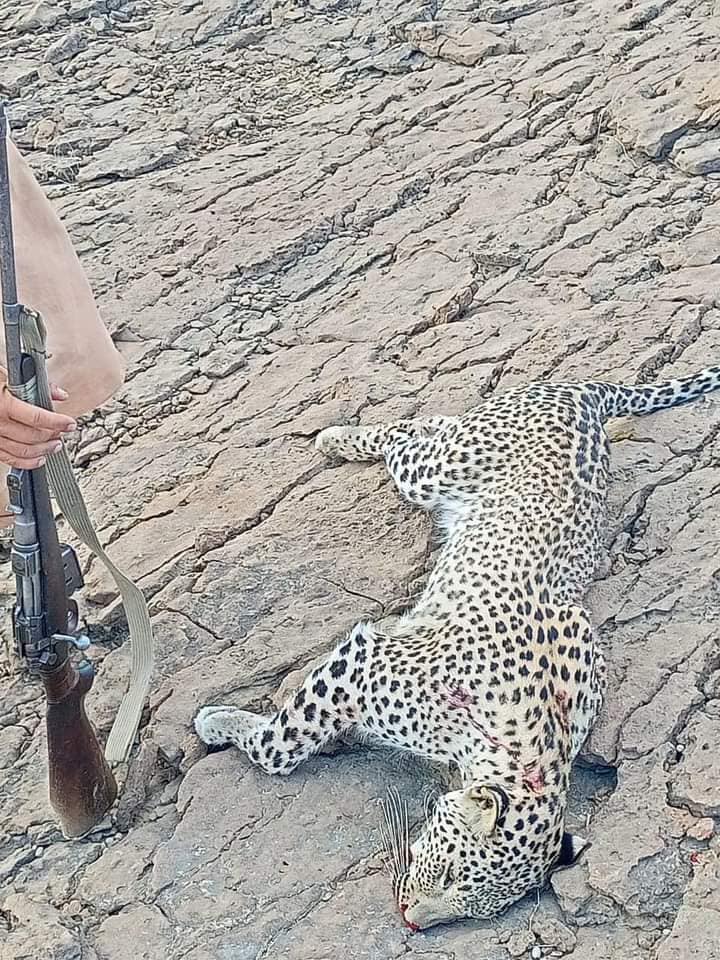The Hingol Tragedy
Where is wwf?
The tragic killing of the rare Persian Leopard is a reality check Call for Wildlife Preservation...
According to World Wide Fund (WWF) it is an International organization dedicated to protecting the world's wildlife by directing its conservation efforts toward protecting endangered spaces and addressing global threats.
Now its the time to ask the wildlife conservation regime or establishment that why poachers seem to have the upper hand despite the substantial resources allocated to wildlife preservation? And how poachers even enter the Protected areas like Hingol National Park with all their snipers and modern equipment?
Balochistan’s Hingol National Park is a highly protected area where the tragedy unfolded recently as a rare Persian leopard was sighted only to meet a cruel fate at the hands of poachers. The majestic creature and a beautiful specimen of the region’s biodiversity was ruthlessly killed and carried away as a trophy before conservation authorities even had a chance to intervene.
The Persian leopard, a critically endangered specie, is a precious jewel of Pakistan’s natural heritage. Its presence in Hingol National Park should have been cause for celebration and renewed efforts to protect its dwindling population. Instead, it became yet another casualty of unchecked exploitation and disregard for wildlife conservation.
As news of the leopard’s untimely demise spread, questions arose about the effectiveness of conservation efforts in Pakistan and around the world. Organizations like the World Wide Fund for Nature (WWF) and regional wildlife departments receive substantial funding from taxpayers in the global North, with the expectation that this money will be used to safeguard endangered species and their habitats. Yet, incidents like this raise doubts about where these funds are truly being allocated and whether they are being used to their fullest potential.
Why we witness such an irony that the public’s tax money goes to WWF and its subsidiaries to support conservation initiatives but its always the poachers who do their job well and use their expertise to track down and target rare species.
The tragic fate of the Persian leopard serves as a stark a reminder that wildlife conservation is not just a matter of financial transactions but also of effective governance, enforcement, and community engagement. The responsibility lies not only with conservation organizations and government agencies but also with society as a whole to prioritize the protection of our planet’s biodiversity.
This incident is imperative that we hold conservation authorities accountable for their actions and demand greater transparency and accountability in the use of public funds.
Now its the time to ask the wildlife conservation regime or establishment that;
- Why they were not the first one to spot the rare animal and allotted their resources to supervise her, protect her from poachers?
- Why poachers seem to have the upper hand despite the substantial resources allocated to wildlife preservation?
- How poachers even enter the Protected areas like Hingol National Park with all their snipers and modern equipment?
- If there is a need for stronger laws and stricter penalties for wildlife crimes then what is keeping them from persuading the governments to do so?
- Instead of pouring the Aid money on lavish luxury seminars in Five star hotels nation-wide Why they don’t increase their efforts to raise awareness and educate communities about the importance of protecting endangered species?
Only through collective action and commitment its possible to turn the tide against the rampant exploitation of our planet’s precious wildlife.
Now is the time for Wildlife conservation establishment to revise their operational and overall strategies, Hingol tragedy is a Reality check call for them.



